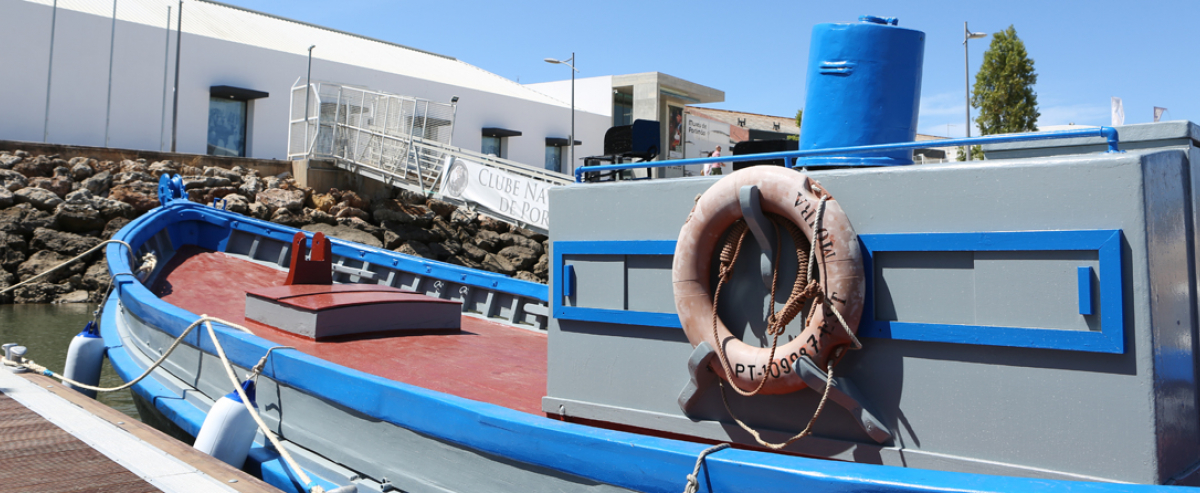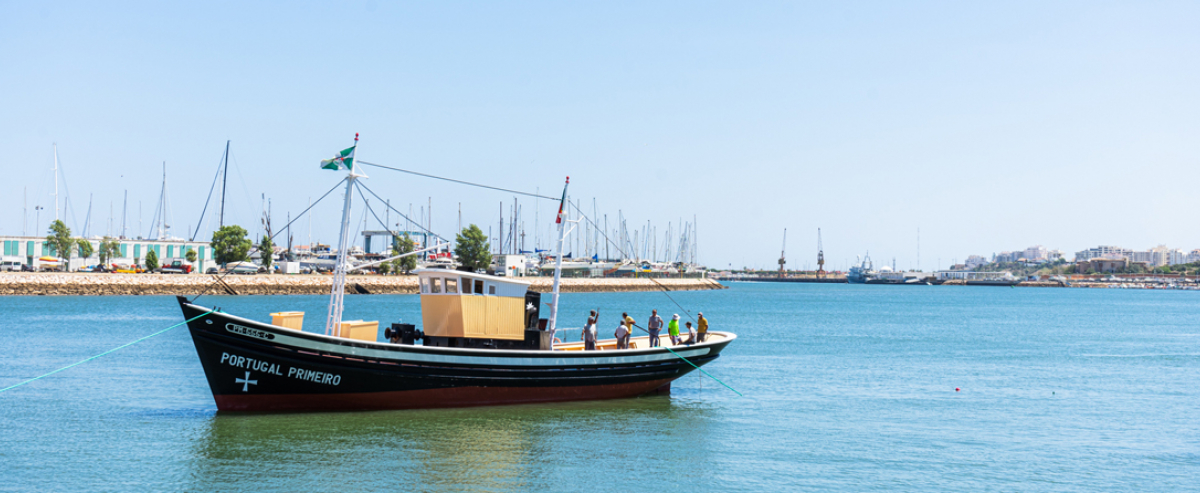Embarcações - local fishing industry
Old trawler “Portugal Primeiro”
The former trawler “Portugal Primeiro” is moored next to the Gil Eanes pier, in Portimão, in the place where, in the heyday of purse-seine fishing, sardines were unloaded.
After a profound restoration process coordinated by the Museum of Portimão, the old trawler crossed this Thursday, the 27th of July, the Arade river, after being dumped at the shipyards, on the left bank, where today the fishing port is located, to the right bank, in the riverside area of the city .
A short river crossing that, even so, was not free of mishaps: halfway through the trip and with the tide going down, the «Portugal Primeiro» ran aground on a sandbar. But the efforts of the other vessels that helped with the crossing were crowned with success, and the centuries-old trawler continued on to the place where it is now moored.
In the future, it will be at Cais Gil Eanes that the old trawler will be moored and accessible to visitors. Before that, it will have to be put into a museum, while the quay which is, as Isabel Soares underlined, «historical», will be «requalified».
The objective of this whole project promoted by the Museum of Portimão is «to reinforce the importance of fishing, namely purse seine fishing, wooden shipbuilding and even the commercialization of fish», said the official.
The «Portugal Primeiro» was built by the industrial cannery and ship owner Júdice Fialho, in 1911, in a shipyard in Vigo, Galicia, having started out as a steam galleon for sardine fishing. But, in 1948, it switched from steam to a diesel engine and became a trawler.
Now, thanks to a project by the Museum of Portimão to restore this century-old vessel, it will be a new Museum Nucleus, on the banks of the Arade.
Vessel Moira
The historic vessel “Moira” is docked next to the Museum. This boat, built in 1936, in Sesimbra, but which operated in coastal fishing, in the city of Portimo, between 1941 and 1969, was donated to the Municipality by the Administration of the Ports of Sines and Algarve.
The story of this “envoy” merges “with the local fishing industry.
The local authority accepted the donation of “Moira” taking into account the “patrimonial and historical interest” of the vessel, built in wood, and the fact that it is “one of the last examples of its kind”, constituting “a social and cultural testimony that it is important to maintain and enhance”.
The good state of conservation and the few transformations that it presents compared to the original, give the vessel an important tourist and cultural asset for the city and for the Algarve region, not only due to its enjoyment and preservation, but also for its use in future recreations of fish unloading, within the scope of the Sardine Festival and in the creation of another point of interest next to the pier of the Portimão Museum, where a dry dock will be installed for the mooring and mooring of “Moira”.
The boat has been in the service of APS since 1969, when it was acquired from its previous owner Carmen Simões, for 100 escudos. Its history includes the fact that it was built in 1936 in Sesimbra, although it has been in Portimão, in coastal fishing, at least from the beginning of the 1940s to 1969.
More concrete data indicate that it was acquired in 1941 by José Basto, at the time under the name “Come Figos”, who reported it to the captaincy of the Port of Portimão.
It is registered as a “coastal fishing” and “fisheries” vessel, and there is a horizontal plan of this vessel, dated 1955, in which it is identified as a “motor vessel”.
Still in 1941, the boat was sold for 2000 escudos, "apparently it was a partnership between Cristovão de Brito and Carmen Simões".
At the time of the acquisition by this pair, the change of the vessel's registration to the name “Senhora do Carmo” is requested, a name that remained until it was acquired by the Junta Autónoma dos Portos do Barlavento do Algarve in 1969.
According to some testimonies, this vessel served as a support envoy for trawlers and will have made several trips to Morocco, fishing for anchovy, which lasted about a week.
Currently, the “Moira” is in a docking platform inext to the pier of the Portimão Museum.


